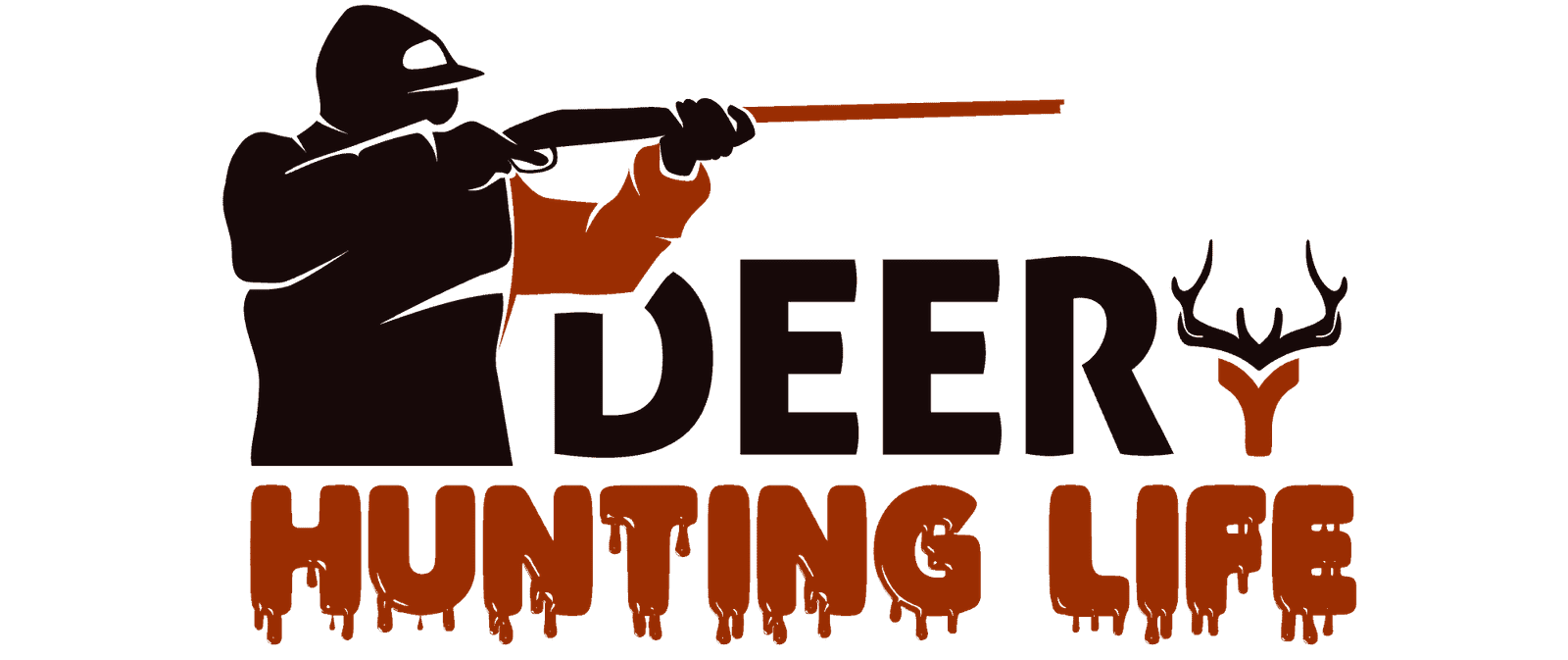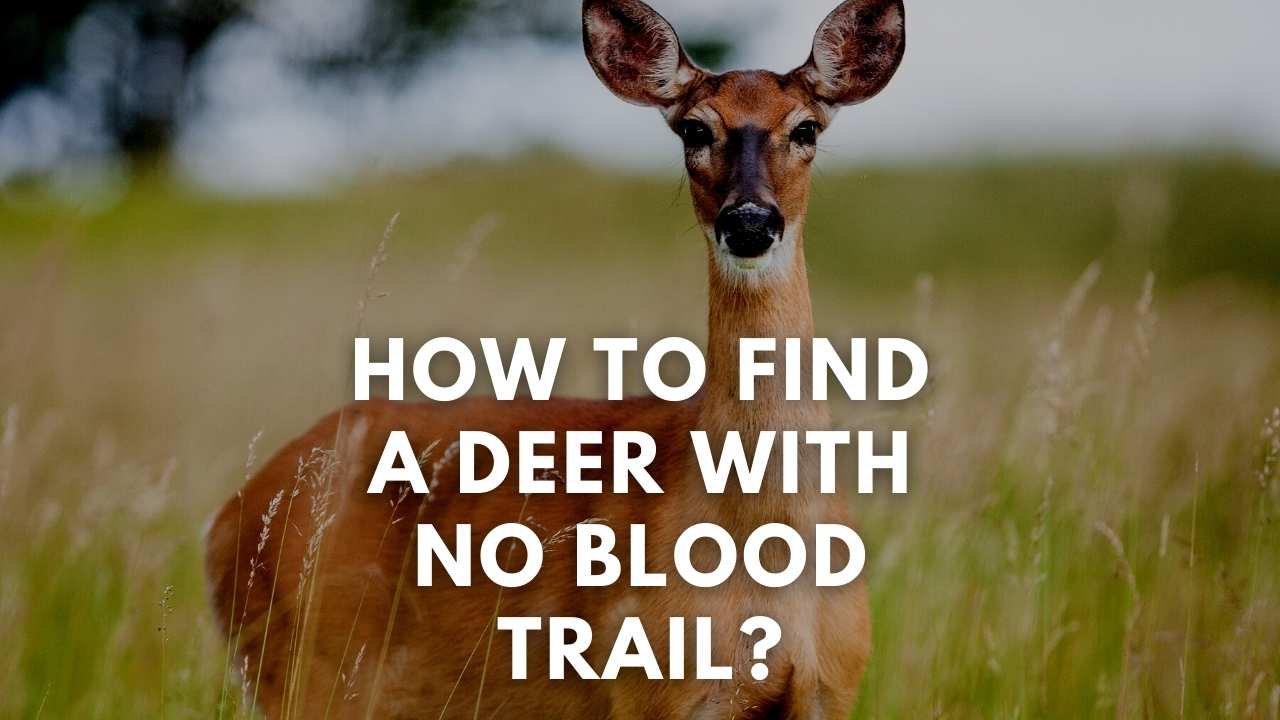After shooting a deer, if the evident blood trail disappears, hold onto hope. Trailing may get more difficult, but if you’re persistent and understand why the blood stopped, you can still find the deer. So, how to find a deer with no blood trail?
A trail without blood is almost impossible to follow. Yes, you can start by looking for further clues, like hoof prints if the deer is making tracks. As an alternative, you might locate debris by the sides of trails where the deer ran or see curled leaves where the deer’s hoofs had walked in the woods.
Even thought finding a deer with no blood trail is really hard to do, there is still something you can do. Keep reading this article to learn what we do to find a deer even after we lost the blood trail.
6 Steps on how to find a deer with no blood trail?
Every one of us has been troubled by a time when we were unable to find a wounded deer. In an ideal scenario, you should be able to follow a useable blood trail that will take you right to the animal with the correct tools and an accurate shot. However, it’s not always the case. Because things don’t always go as planned, you might need to follow a wounded deer with little to no blood trail.
Here are some pointers about how to achieve this in the best way possible.
1. Just wait
Even the most experienced hunter gets a bit excited when they wound an animal because hunting is an adrenaline-fueled procedure. The first thing you should do after the shot is take some time to collect yourself so you can respond to the situation logically. Spend about 20 to 30 minutes getting ready to track after removing any extra layers of clothes you may be wearing. After this relaxation period, you’ll be much more prepared to find the injured animal.
2. Verify your shot
Once you’ve gathered yourself, you should analyze where the shot landed and how the deer reacted. If the deer jumped, kicked, and darted away quickly, there’s a good chance you caught its vitals. This means it shouldn’t be any more than 100 yards away. If you caught it in the stomach, however, it will most likely try to bed down, which could mean several hours until you should start heading after it.
3. Examine the shooting location
When you are certain of how the shot was delivered, look for any traces of disturbance on the ground around the deer’s original location. Around the area of impact, the earth should have changed, and this might assist you locate where the deer ran after being struck. Leave a marking at the initial site of impact to serve as a guide as you begin to follow the path.
4. Inspect and see if the ground has any blood on it.
Even while there might not be a sizable or discernible blood trail, there will probably be at least some blood on the ground where the deer was struck. The deer will be nearby if the blood is bright pink and frothy, which often suggests a lung shot. Rich crimson blood is another indication that the animal should be nearby since it indicates a shot close to the heart. You’ll probably need to wait a couple of hours before you can start your tracking if you have dark blood, which is indicative of a kidney or liver shot. The worst-case scenario is yellowish-green blood, which indicates you caught the deer in the stomach and that its range of motion is unpredictable.
5. Deer circle around.
No matter what kind of blood you find, there’s a strong probability the deer you shot will initially go downwind from where you shot it. Start walking in a 40-yard circle from where it hits if you are unsure of its direction of flight. Watch for any distinguishing hues, like as a white tail in the fall or brown fur if there is snow on the ground.
6. Look at the sleeping areas.
Whether there are any bedding spots close to where you will be hunting, you should inspect them to see if the deer has made its way there. Deer that have been injured often go to their bedding areas because they feel comfortable there.
How do you track a deer without a blood trail?
Go return to where the deer was standing when you shot it and look for blood there if you can’t detect a blood trail. Once you locate blood, the color of the blood will assist you pinpoint the location of the deer’s injury and create a clear path for locating the animal. Blood that is bright, pink, foamy, and has bubbles implies a lung shot.
Can you shoot a deer and not see blood?
Even while there might not be a sizable or discernible blood trail, there will probably be at least some blood on the ground where the deer was struck. The deer will be nearby if the blood is bright pink and frothy, which often suggests a lung shot.
What should you do if you lose the blood trail of a deer?
Conduct little arching half-circles to get back on the trail if you wait 10 minutes without discovering any blood. When you lose the blood trail, move in the opposite way. Blood is frequently discovered again.
Why would a deer blood trail stop?
Occasionally, wounds cause a downed deer even though the blood trail abruptly ends. Think about the gut shot. Blood can frequently be followed at the beginning of a stomach or intestine wound, but the blood eventually disappears. You might only see a drop of blood every 20 yards or it might cease entirely.
What does a good deer blood trail look like?
Blood with a brown tinge suggests a stomach shot. Your arrow ought to have foul-smelling digestive waste on it. Tracking will start in around 8 hours. A deer with no organ damage and very brilliant red blood implies a muscle shot.
What to do if you can’t find a deer?
Keep an eye out for any blood as well as other clues like trails, broken branches, and disturbed ground. Always request assistance. Having additional eyes improves your chances. You can start a grid search to look for the deer as well.
Conclusion
Don’t assume the blood has completely stopped if you can’t discover any more blood along the trail you followed. When I track a wounded deer and the blood runs out, I virtually never fail to find more blood if I look in the most likely places up ahead.
Thus, it’s time to broaden the search after the tracking is finished. Start by walking any nearby deer paths after identifying the general direction the deer traveled. Walking wounded deer almost always follow paths. They must be followed for at least 50 yards. A tiny drop of blood is all it takes to get you going again. I can’t even count how many times I’ve lost a blood trail only to find another one 100 yards away and an hour later.

